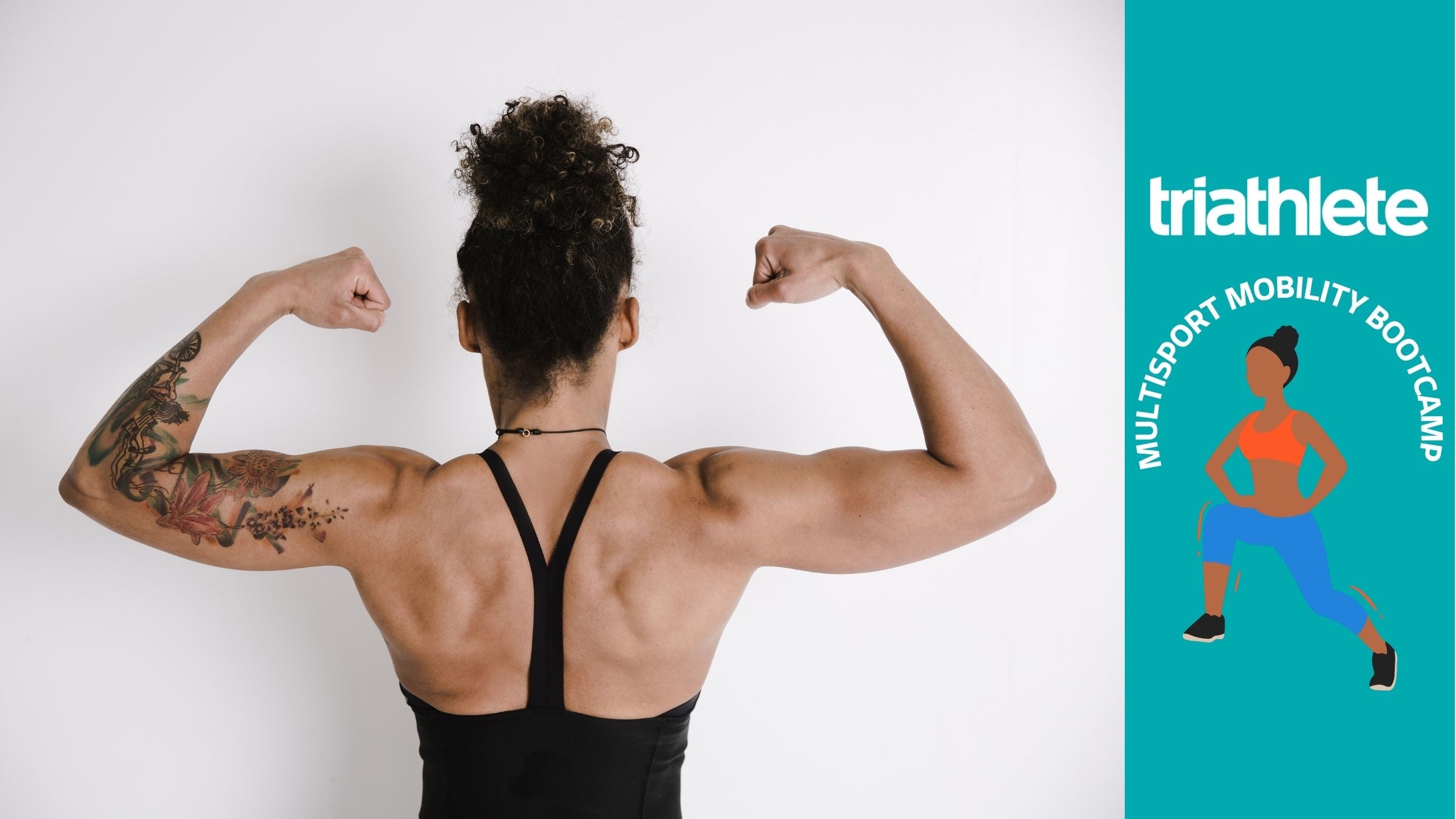Multisport Mobility Bootcamp Wrap-Up

(Photo: Getty Images)
Thank you for joining us for Triathlete‘s Multisport Mobility Bootcamp! Your final testing results at the end of the four weeks should tell you that this isn’t a final result, but just a step in your journey to more functional and practical strength training. After all, it’s called “gym age” because it takes time to grow. One month of strength training is a great start, but if you want to see the full potential of what strength can offer you in terms of injury prevention and performance, it will just take time and consistency.
Also, if you didn’t get started with us on week one, you can pick up the four-week jumpstart at any time in your season—it’s never too late to make some important strength and movement gains.
If you did start with us four weeks ago, based on your final testing results, you can find out your new gym age. Even if you don’t see your overall category change, we hope you saw improvements in your movement that indicates you’re getting better! You may even find that you can do movements that you couldn’t do before.
If you’re new to the bootcamp, welcome! Check out the four weeks of the plan here:
- Welcome To Multisport Mobility Bootcamp!
- Multisport Mobility Bootcamp: Week 2
- Multisport Mobility Bootcamp: Week 3
- Multisport Mobility Bootcamp: Week 4
Gym Age Test Results
- If you are not on the podium in more than half of our tests, your gym age is between 0 and 6 months
- If your average test is in the bronze standard, your gym age is 6 to 12 months
- If your average test is in the silver standard, your gym age is a little over a year
- If you were able to get the gold standard in each of the tests, your gym age is about 2 years! I like to see athletes achieve this standard before they move on to more advanced lifts and training.
The results in these tests will translate to your swim, bike, and run by increasing your efficiency of movement, meaning you’ll go faster while using less energy. You may notice that you feel stronger in your training and are hitting faster times, but often the biggest benefits of strength training goes on behind the scenes. Fewer injuries aren’t as flashy and exciting as a new PB, but it will make your training that much more enjoyable. With fewer injuries getting in the way you’ll be able to train harder and more consistently. In the end, that’s the best thing you can do for your performance and longevity in the sport.
The journey doesn’t stop here though, you should continue to work on your strength in these movement patterns and keep retaking the test to track your progress. It’s good to get different stimuli by doing different kinds of movements in your training, but you could work the movements from this bootcamp into your strength training in a couple different ways.
If you only had a couple areas that you wanted to keep improving on, you could do a few sets of those movements from the boot camp before doing a strength session. Or, if you wanted to improve your test results more generally, you could do one of the sessions from the bootcamp each week going forward. These movements will continue to help you improve in the testing, but doing a diverse set of strength movements in your other strength sessions will ensure that you see the long term improvement you’re looking for.
RELATED: Strength Training for Triathletes
Looking for More Strength Plans?
Check out Pendola Project’s selection of specialized strength plans for runners and triathletes.
As a former hotshot firefighter who found himself injured, Matt Pendola relied on strength and mobility training to rehab his own injuries and get back to running pain-free. Inspired by the huge impact that strength and mobility had, he has gone on to become an EXOS Performance Specialist and Licensed Massage Therapist with a focus in manual sports massage therapy. As a strength coach, he’s worked with the likes of Gwen Jorgensen and Ben Kanute, who last year, under his guidance, placed 2nd at the 70.3 World Championships. Despite his success with high-performance pros, Matt’s greatest thrill is getting to teach athletes of all levels how to perform with more confidence and control.